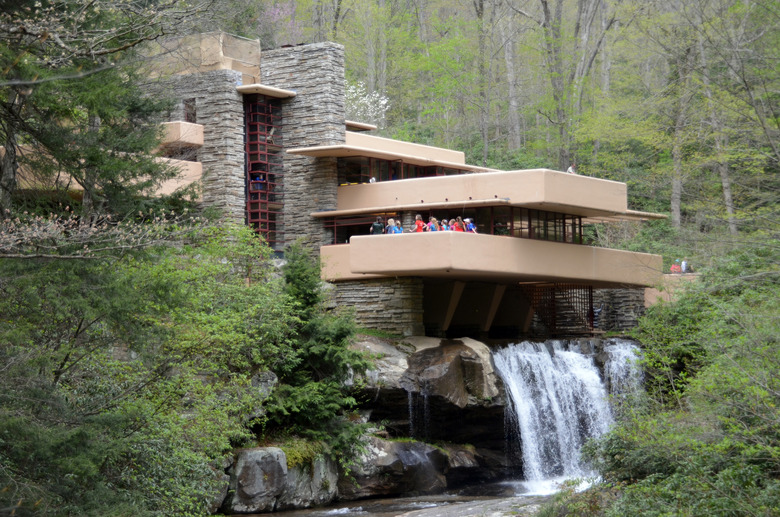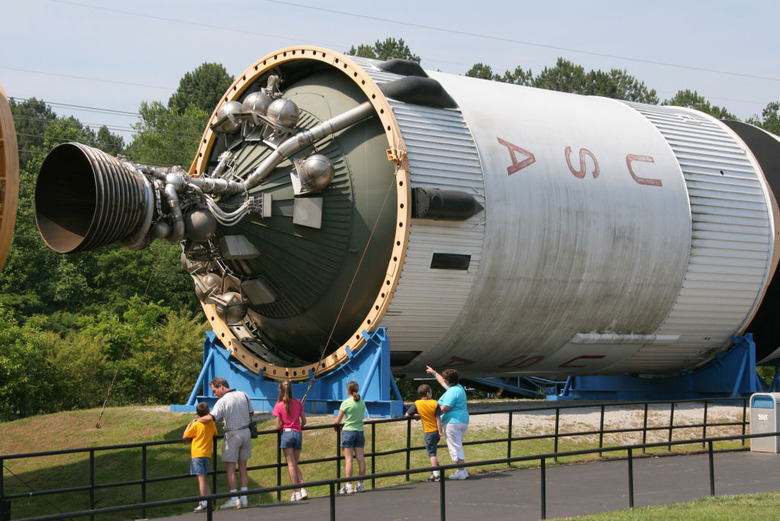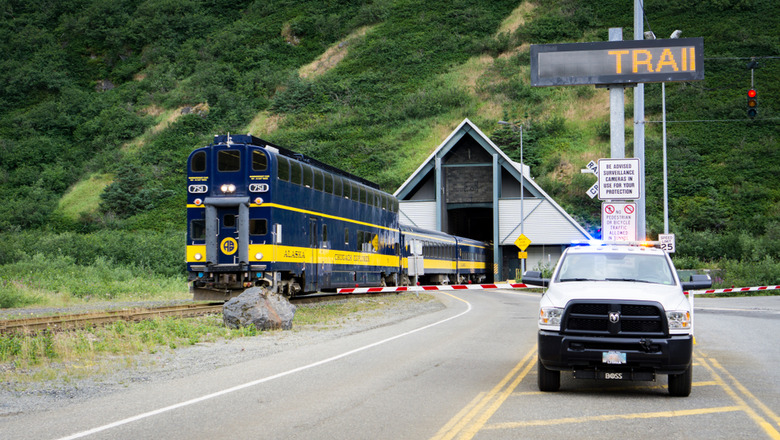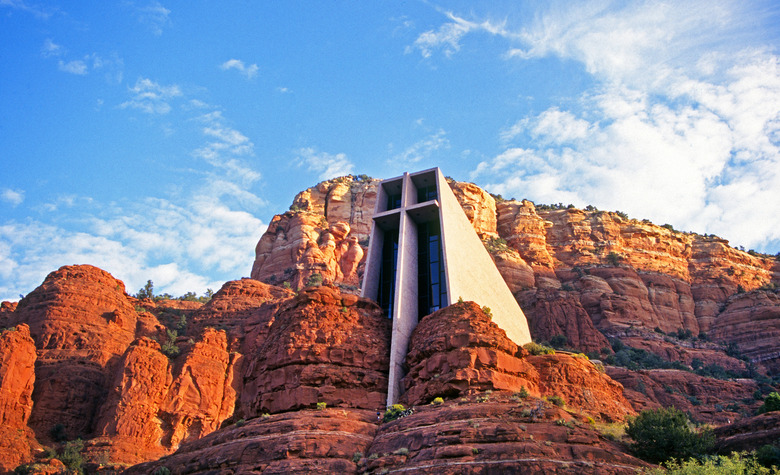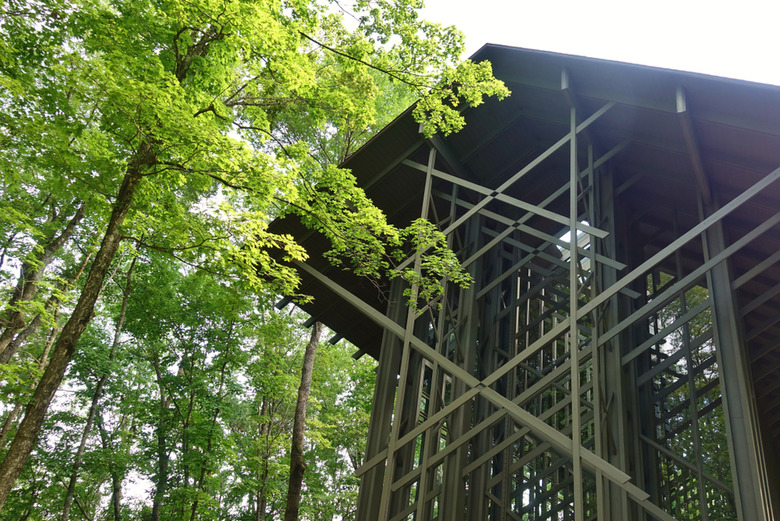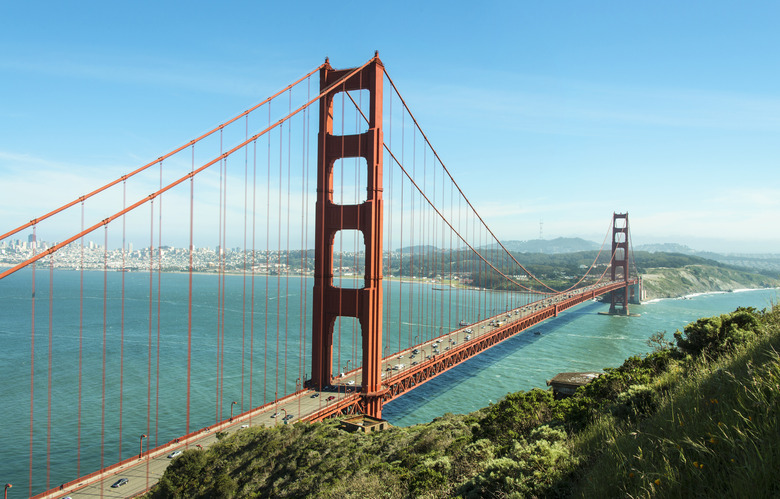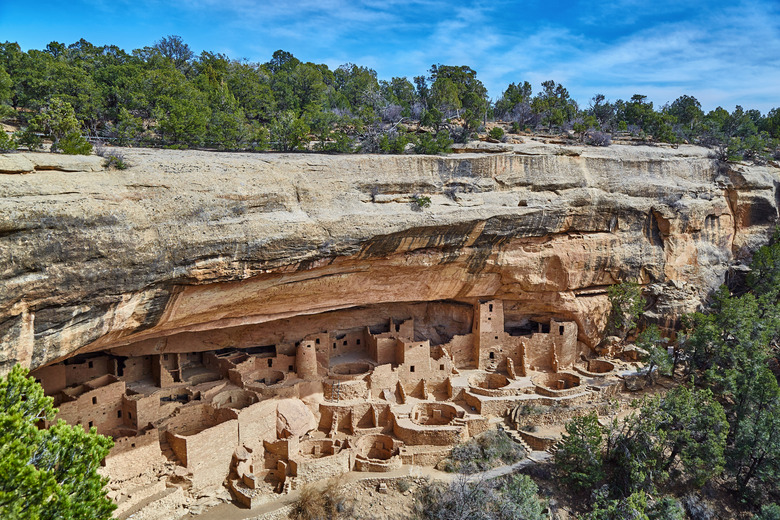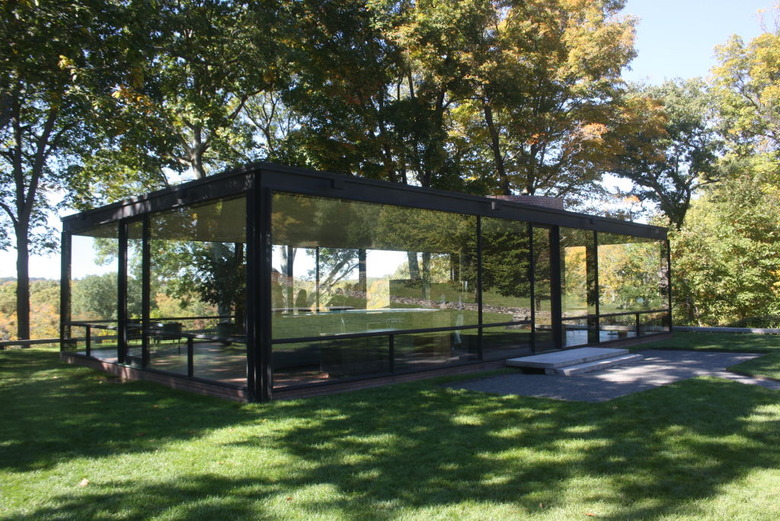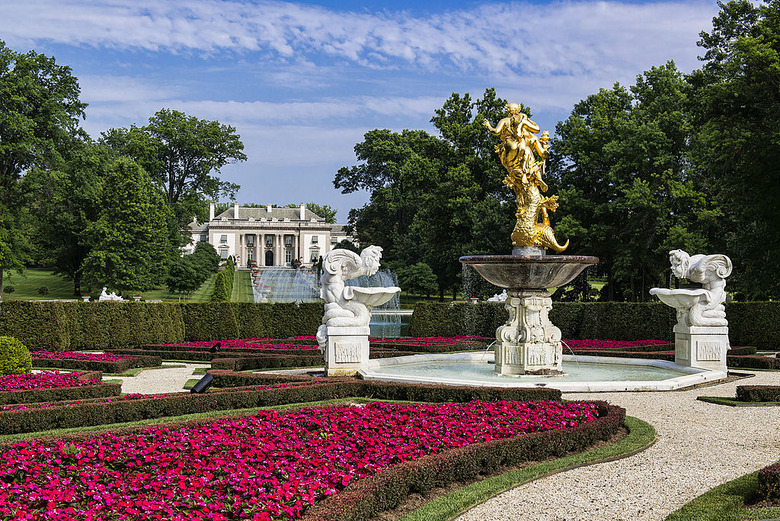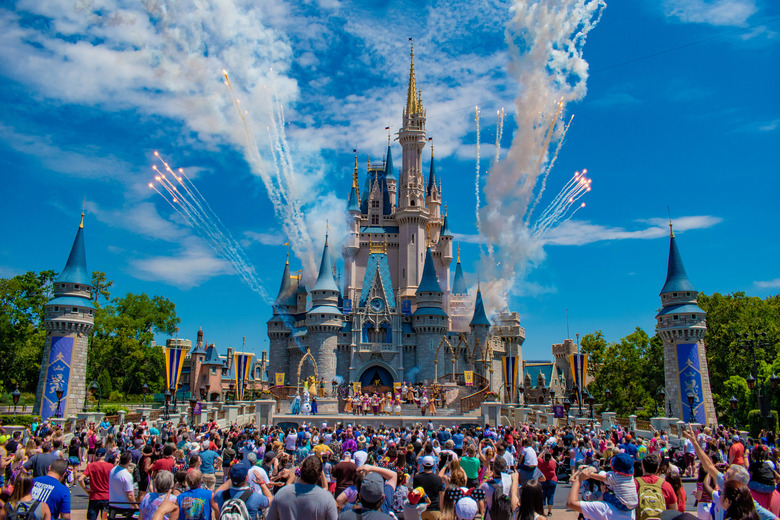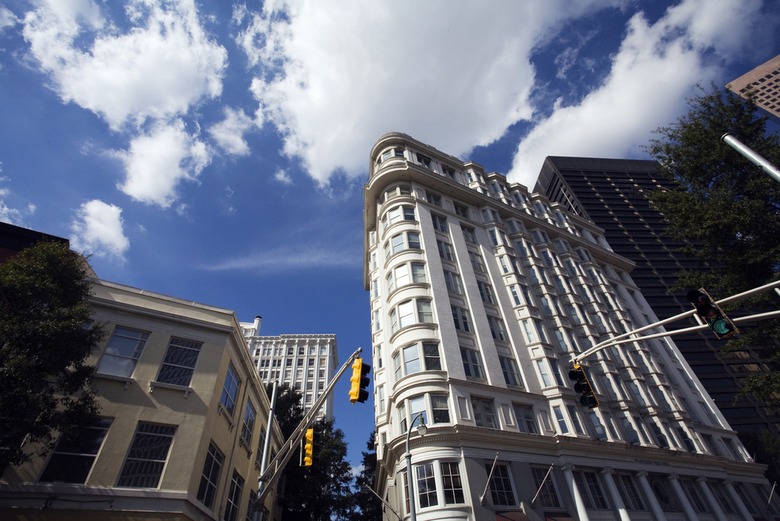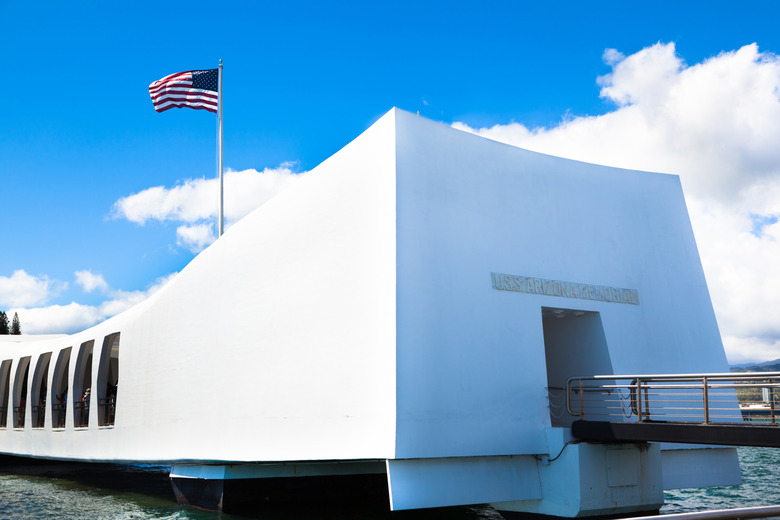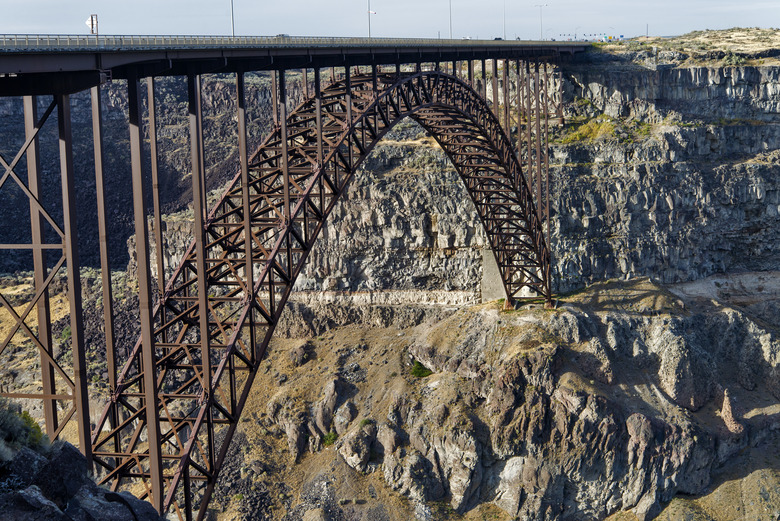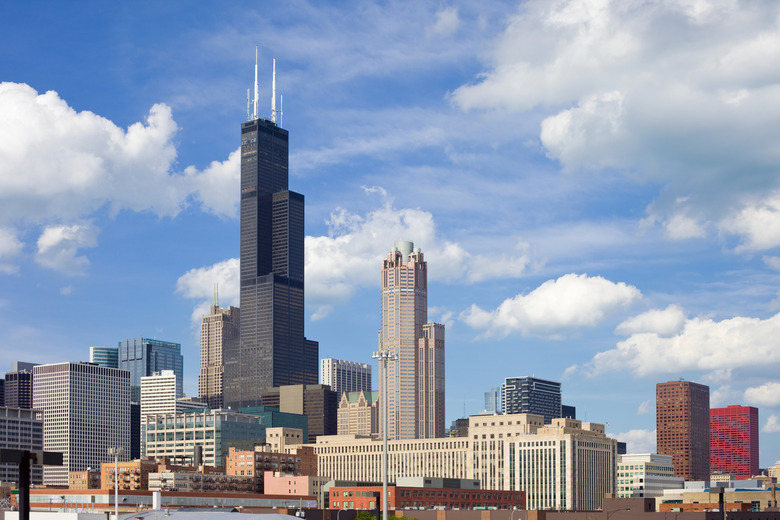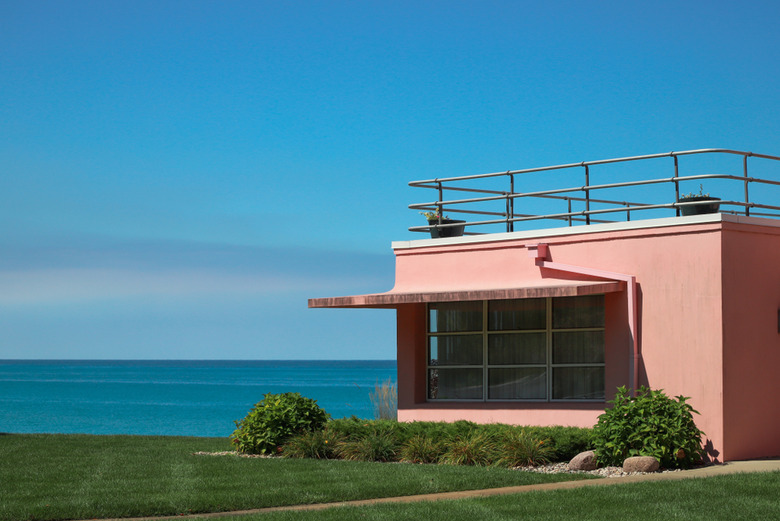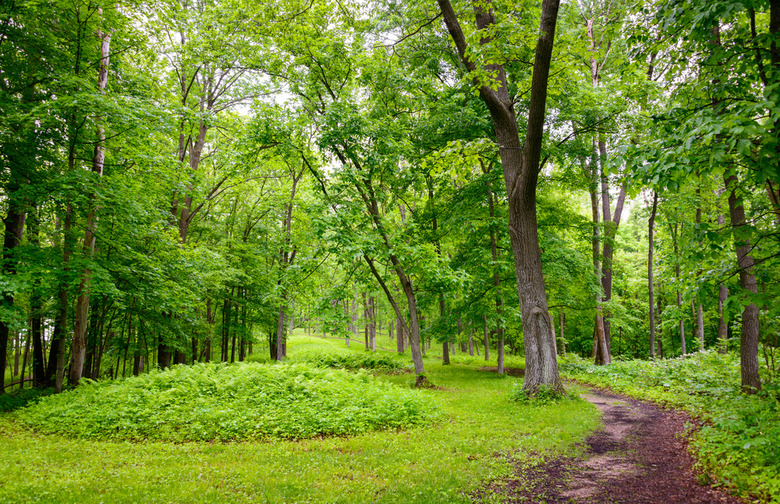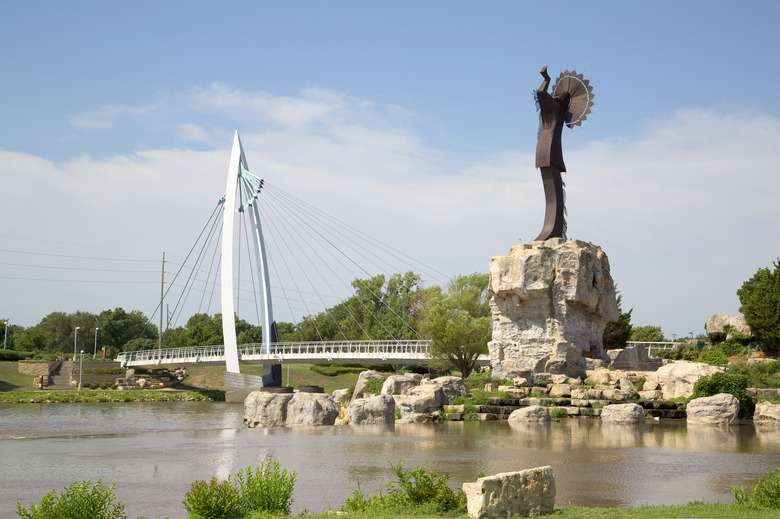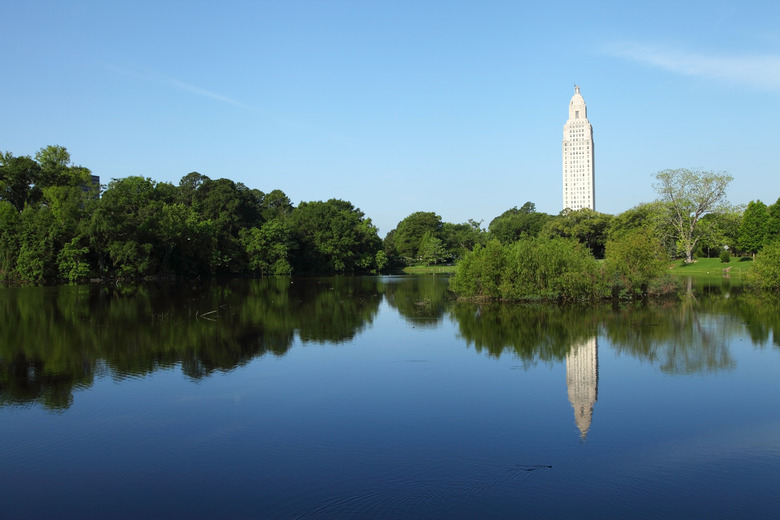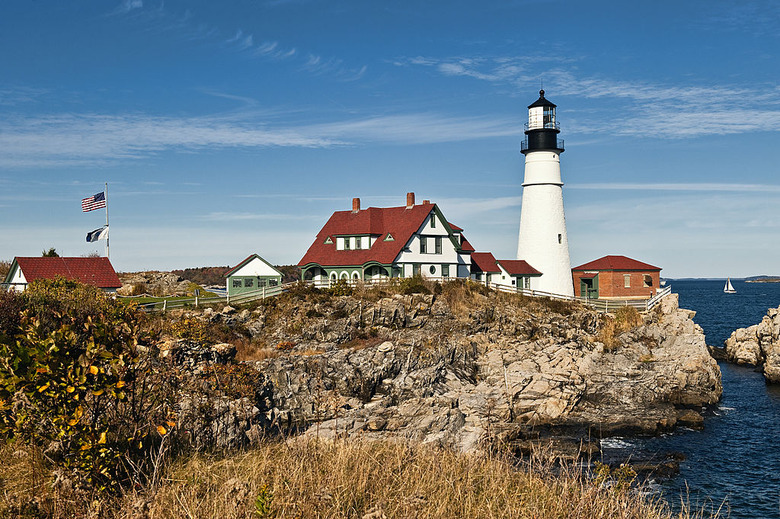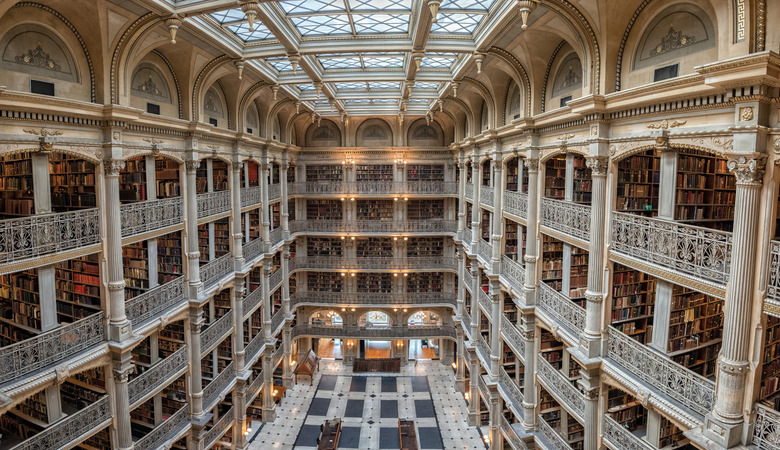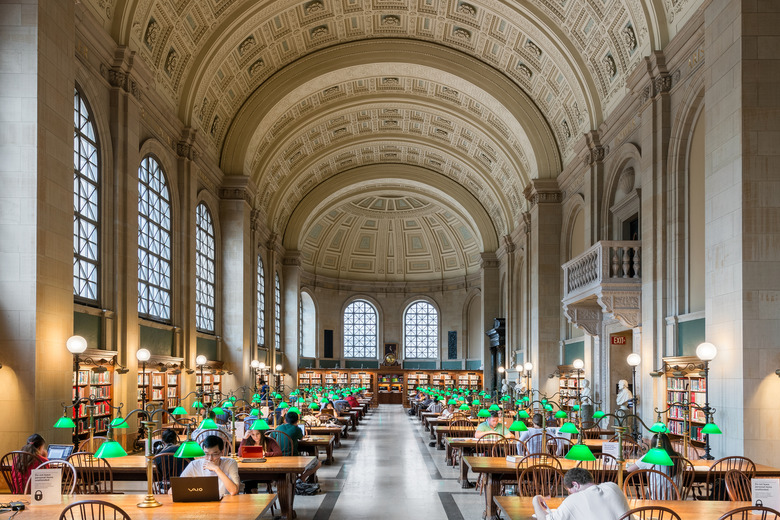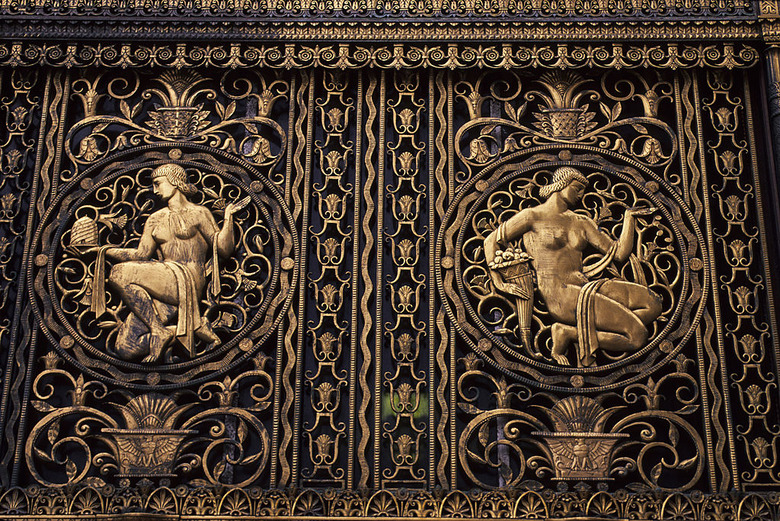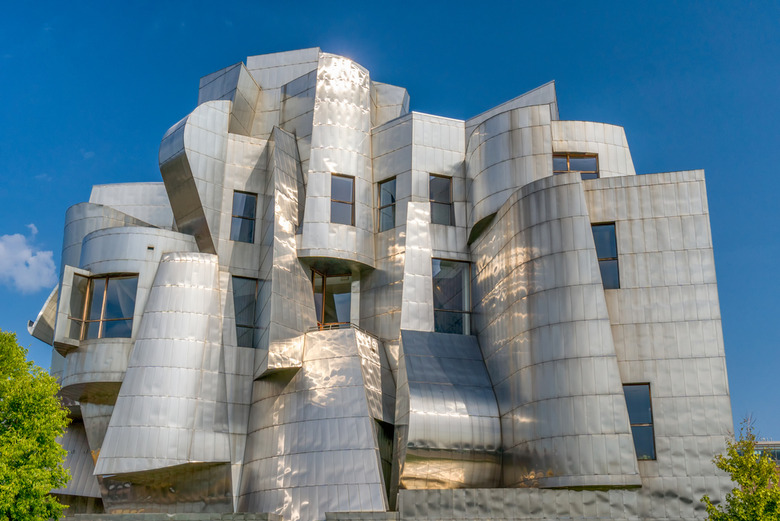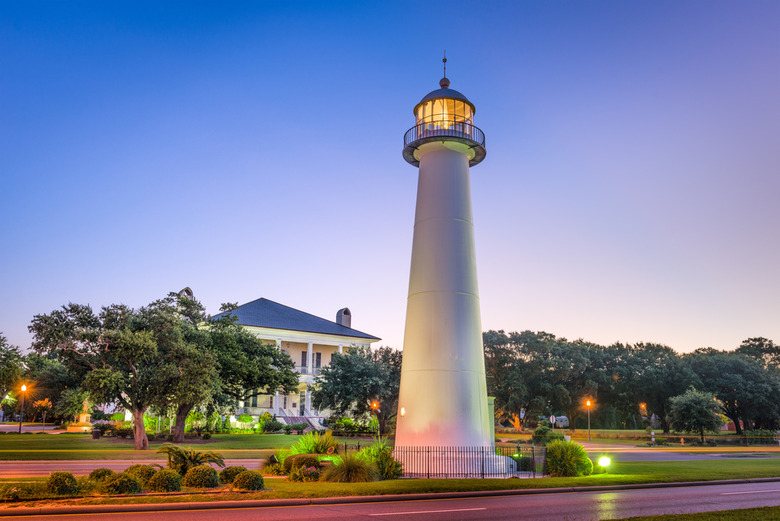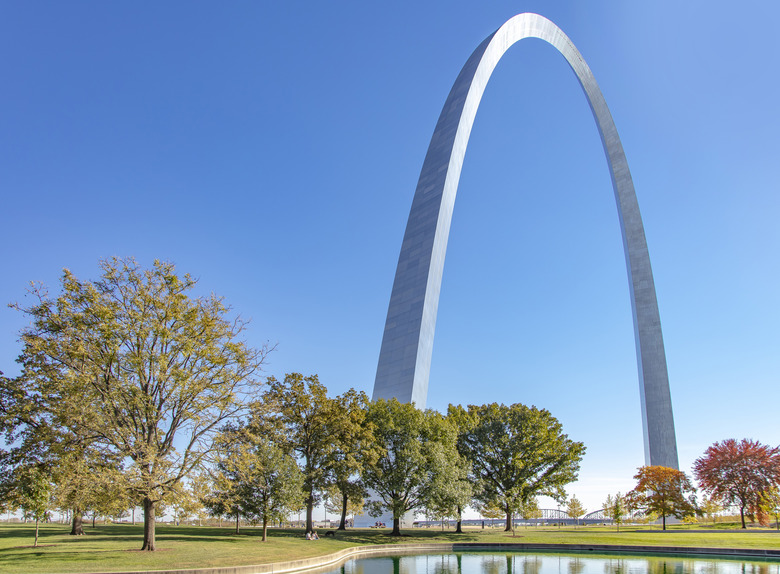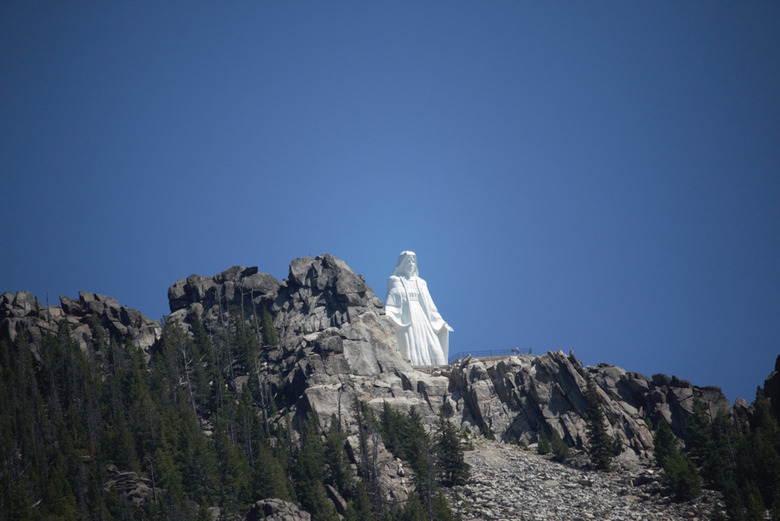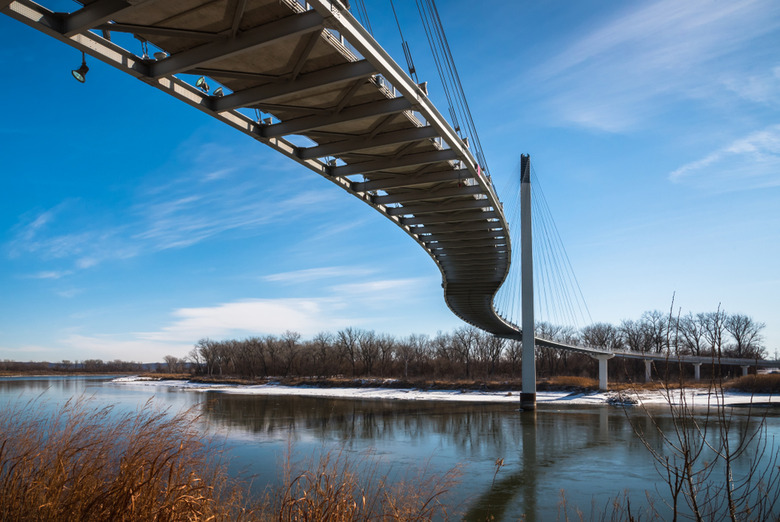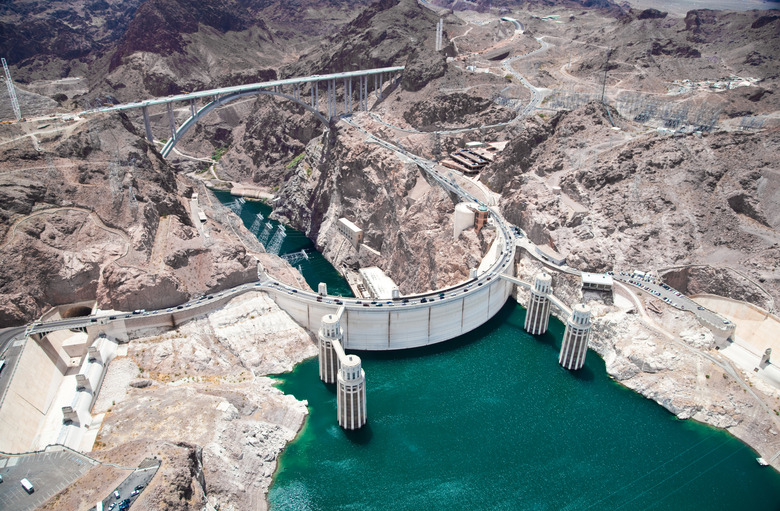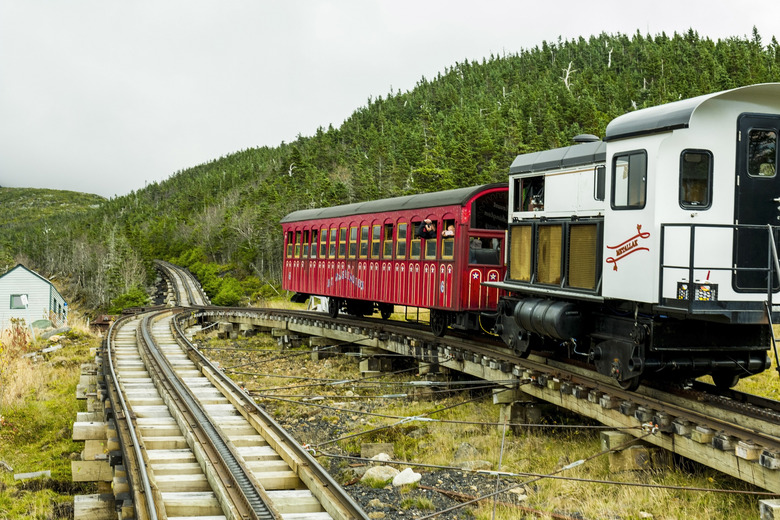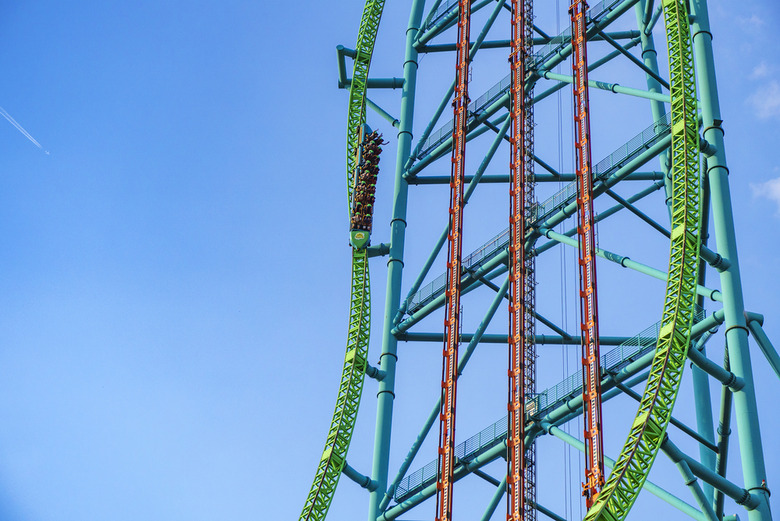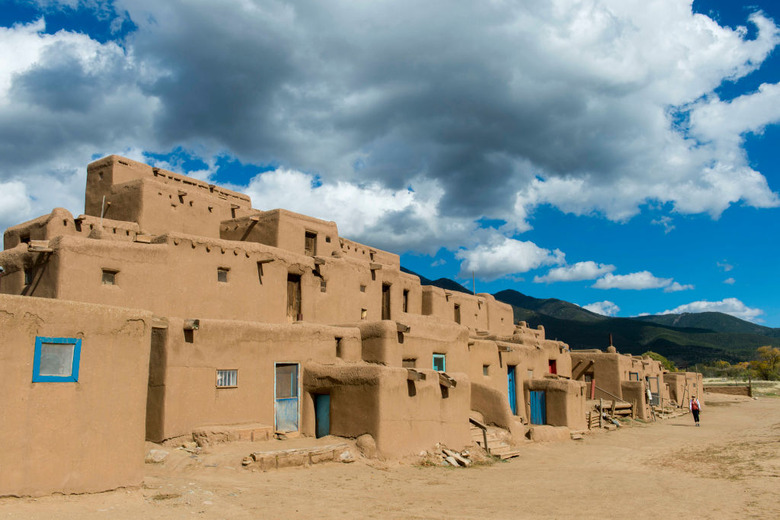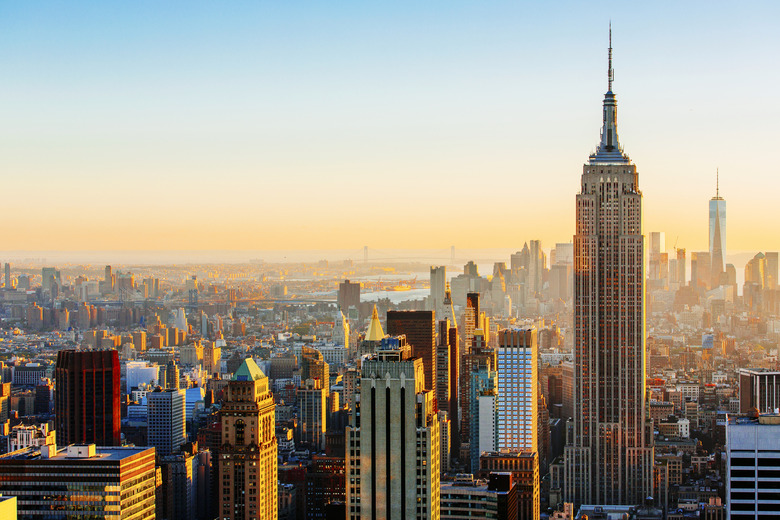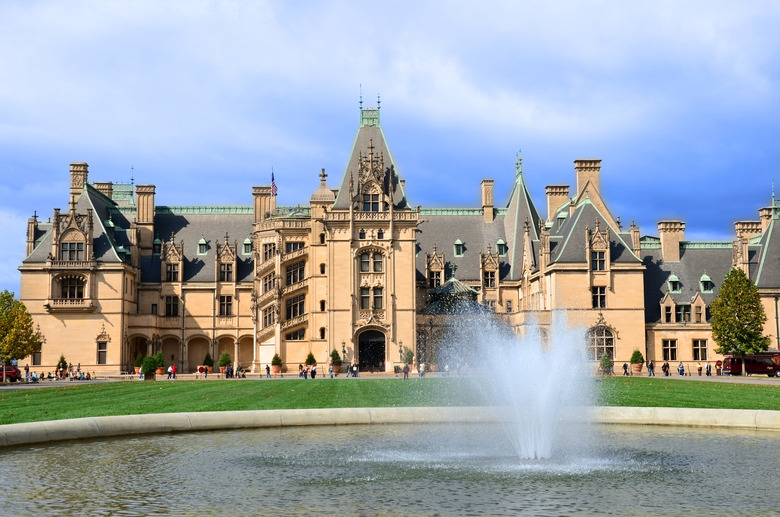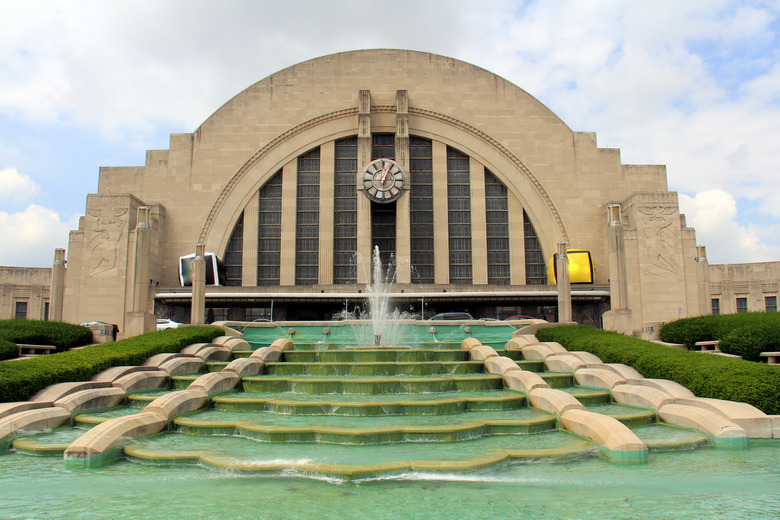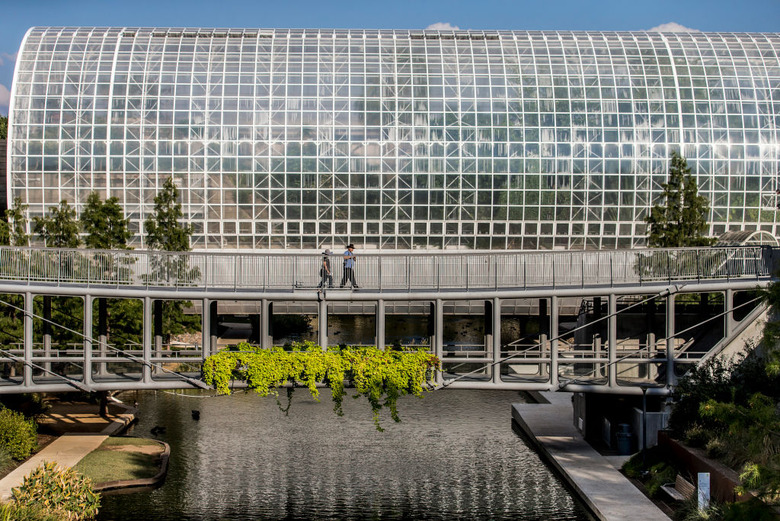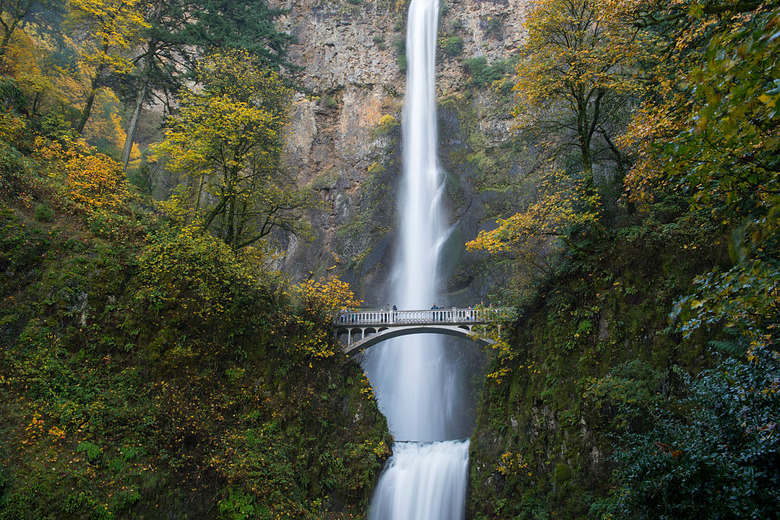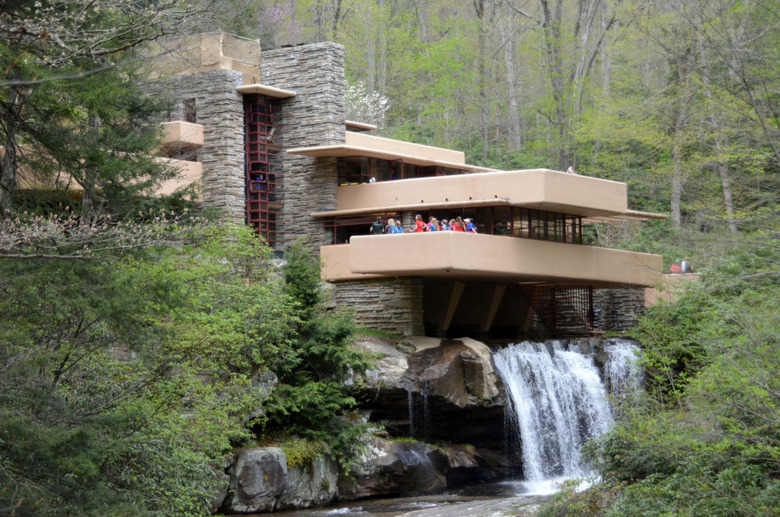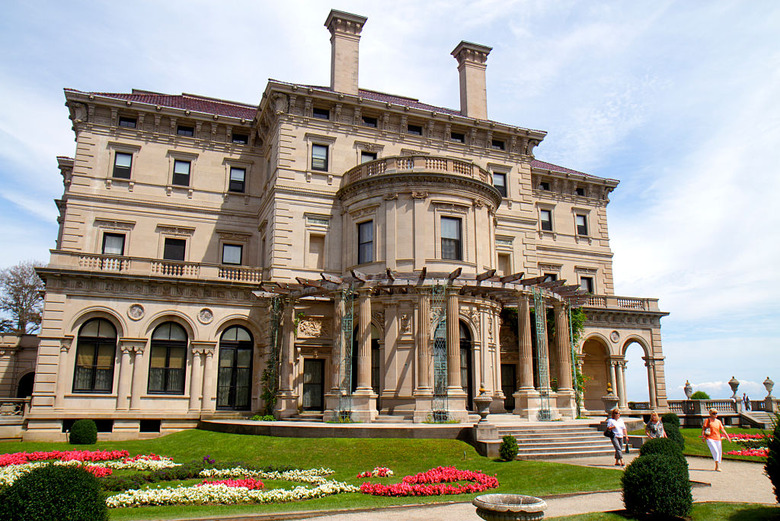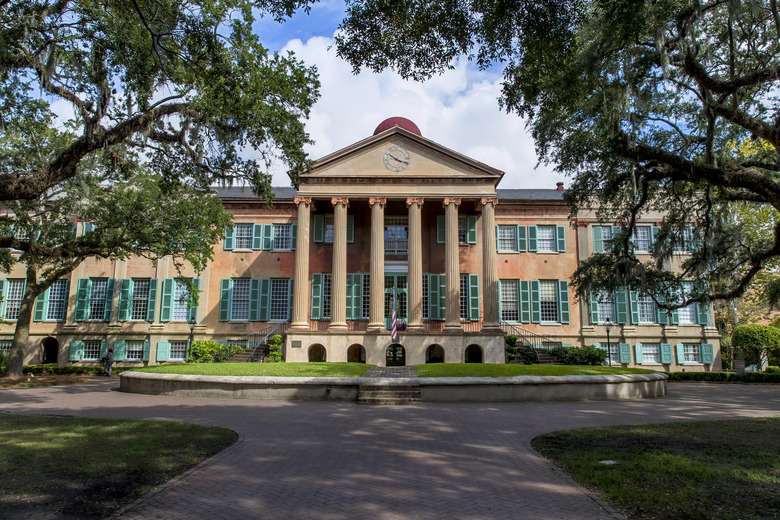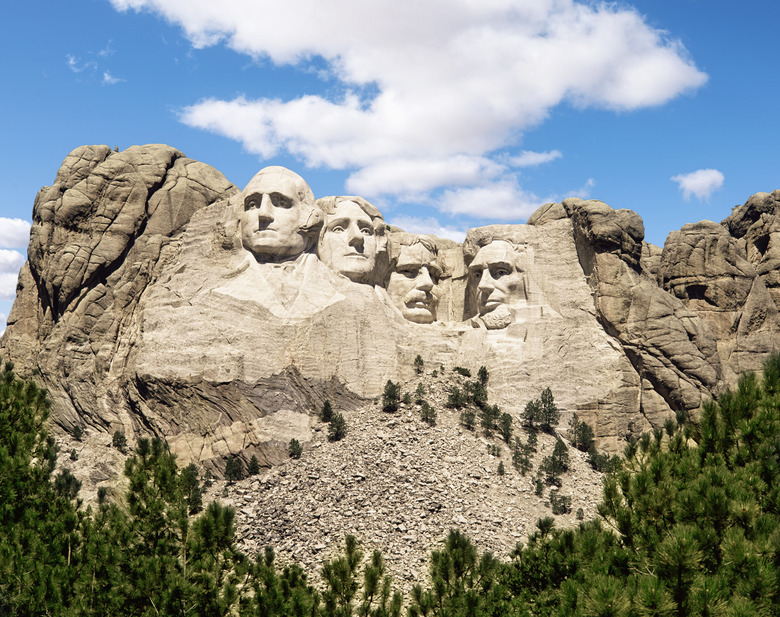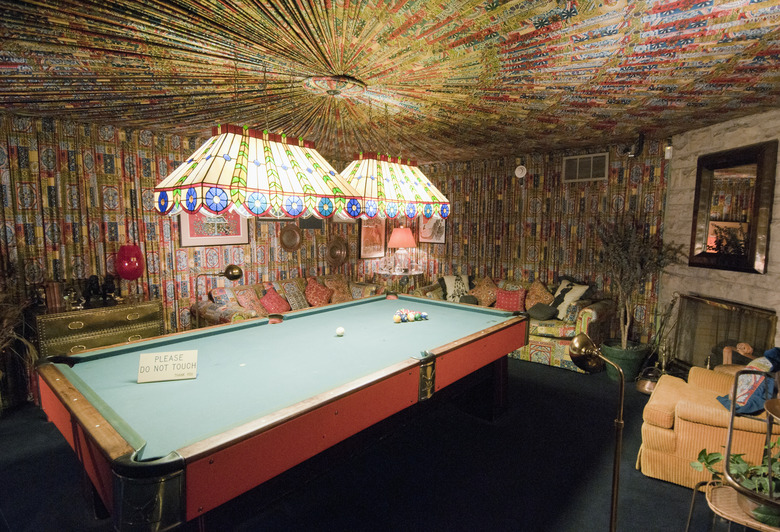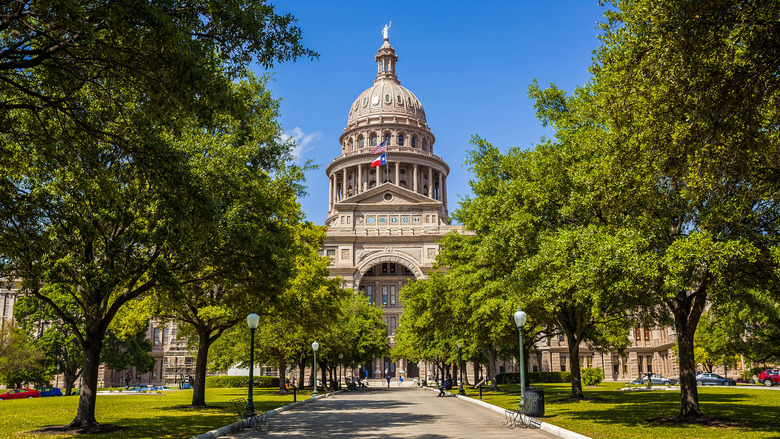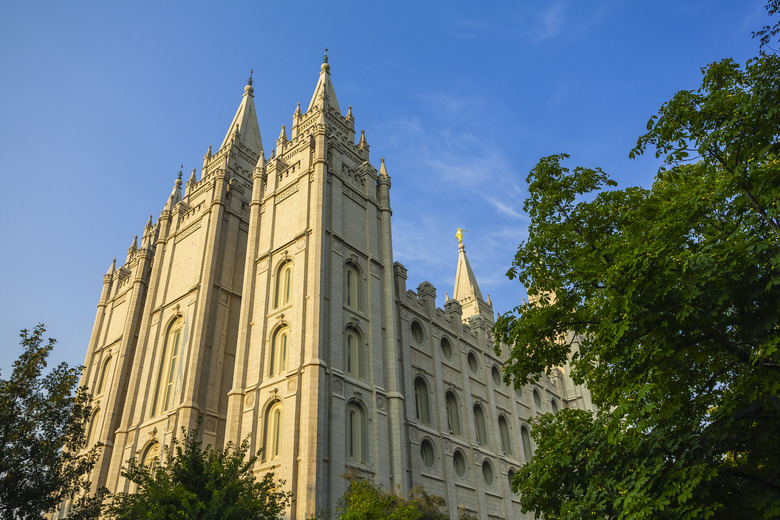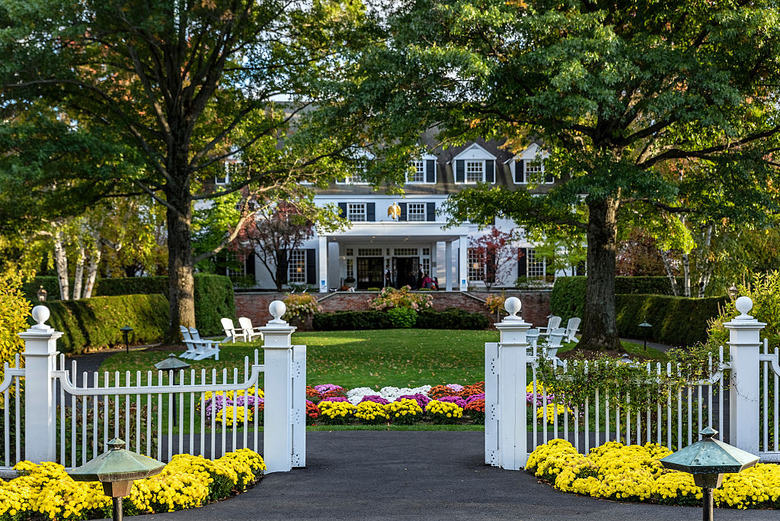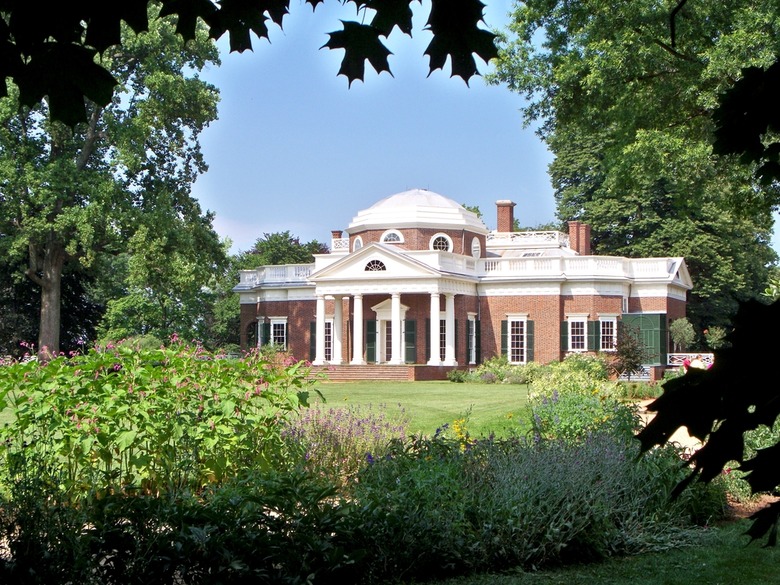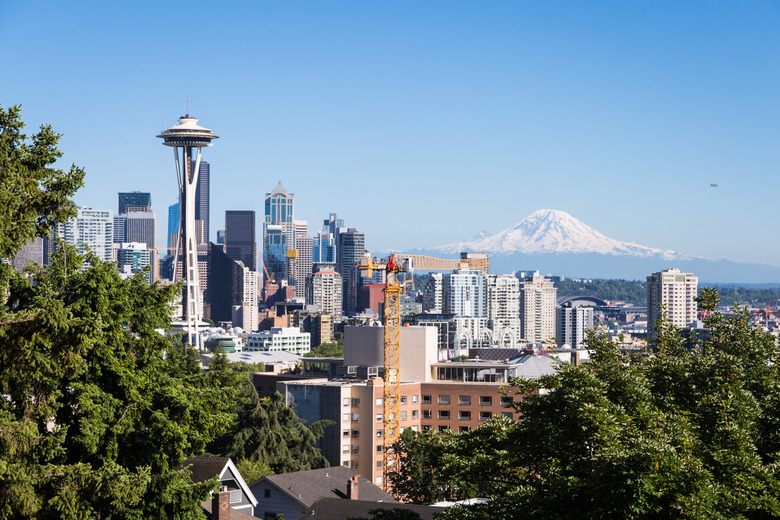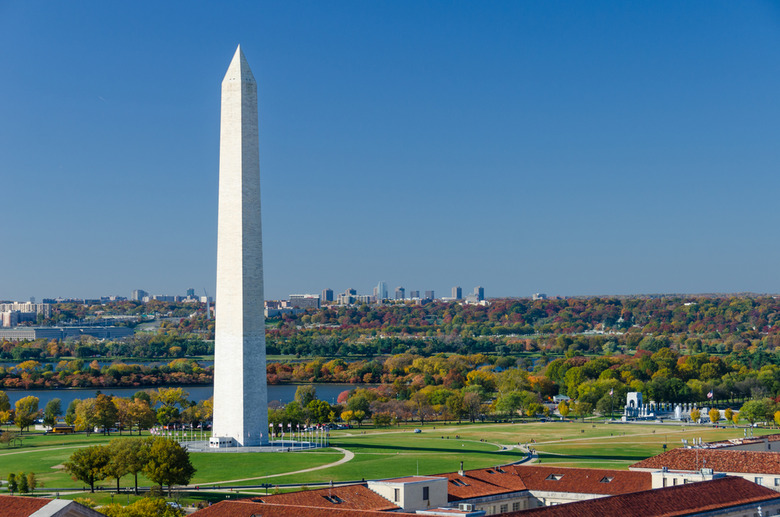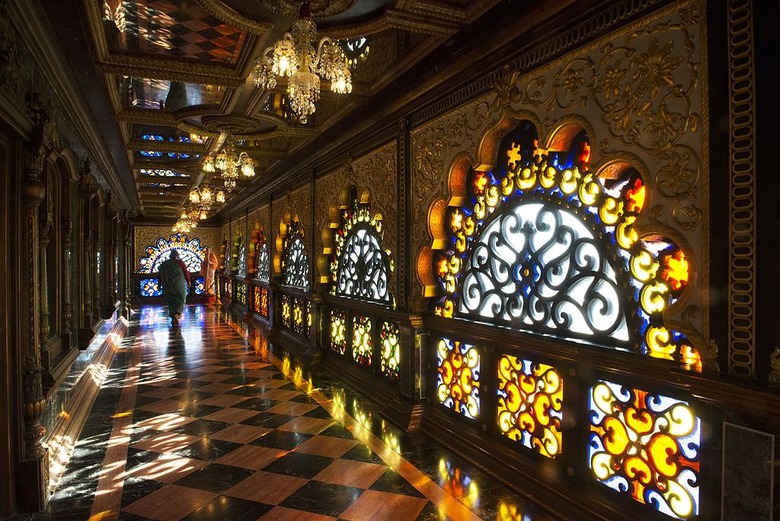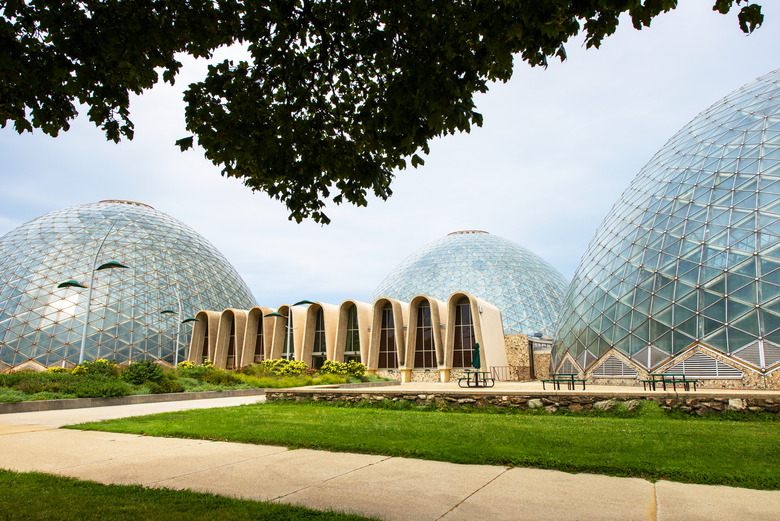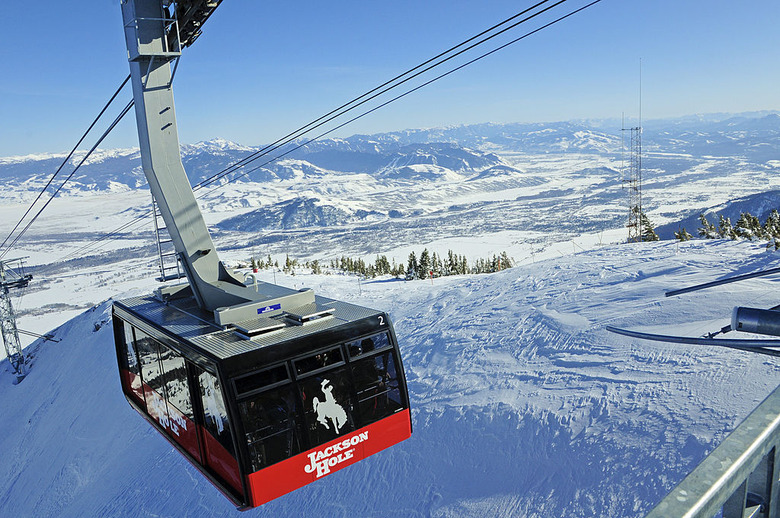The Tallest Buildings, Best Bridges And Most Beautiful Homes In America
America is home to so much breathtaking natural beauty, from spectacular lakes and waterfalls to stunning coastlines to gorgeous scenery in its state and national parks. But some of America's most famous, fabulous landmarks were actually designed and built by humans.
These bridges, buildings, churches, castles, college campuses and more are not just the biggest, tallest, hardest to build or most beautiful. On top of that, they have become iconic symbols of their states, drawing in tourists from around the country and even around the world to marvel at their design. Whether they're loved by locals or lauded by professionals like the American Institute of Architecture, these are the top man-made marvels in every state.
Alabama: US Space and Rocket Center (Huntsville)
One of the most-visited tourist attractions in the country, the U.S. Space and Rocket Center in Huntsville, Alabama, is one of the best places in America to marvel at rocket ships up close. The center houses an authentic Saturn V rocket, one of only three in the world, that is protected as a National Historic Landmark. It's also home to artifacts such as Pathfinder, the world's only full-stack space shuttle display.
Alaska: Anton Anderson Memorial Tunnel (Whittier)
Alaska's Anton Anderson Memorial Tunnel is the longest highway tunnel in North America. This 2.5-mile-long, single-lane tunnel runs between Anchorage and Whittier and is shared by both cars and trains in both directions. Because of Alaska's extreme weather, the tunnel was built to withstand 150 mph winds and temperatures down to 40 below zero.
Arizona: The Chapel of the Holy Cross (Sedona)
The Chapel of the Holy Cross has become an icon of the city of Sedona, Arizona, since its completion in 1956. The chapel sits high atop the area's iconic red rock formations and its sleek, minimalist design helps it blend harmoniously with its natural surroundings. It joins the ranks of the most awe-inspiring places of worship around the world.
Arkansas: Thorncrown Chapel (Eureka Springs)
Tucked away in Arkansas' Ozark Mountains outside of Eureka Springs, Thorncrown Chapel is a glass and wood nondenominational forest sanctuary that looks like something out of a storybook. The chapel has won many accolades for its design and was ranked fourth among the top buildings of the 20th century by the American Institute of Architecture.
California: The Golden Gate Bridge (San Francisco)
The most photographed bridge in the world and one of the most photogenic landmarks in the country, the Golden Gate Bridge is a symbol of San Francisco and of the United States. Nicknamed "the bridge that couldn't be built" because of the forces working against it, the bridge was successfully completed in 1937. Today, it's considered one of the Seven Wonders of the Modern World by the American Society of Civil Engineers.
Colorado: Cliff Palace (Mesa Verde National Park)
The Cliff Palace in Colorado's Mesa Verde National Park is truly an eye-popping sight that must be seen to be believed. The largest cliff dwelling in North America, Cliff Palace is a feat of Native American engineering carved out of a mountainside almost 1,000 years ago. This palace contained 150 rooms and was home to approximately 100 Ancestral Pueblo people before being abandoned.
Connecticut: The Glass House (New Canaan)
Located on Grace Farms, a former horse farm in New Canaan, Connecticut, the Glass House was built in 1949 by architect Philip Johnson, who was inspired by Mies van der Rohe's Farnsworth House. Considered a brilliant piece of modern architecture, this house doesn't have any interior walls and its exterior walls are all glass.
Delaware: Nemours Mansion and Gardens (Wilmington)
A true Delaware hidden gem, Nemours Mansion and Gardens in Wilmington is a sweeping, 77-room French chateau in the style of Louis XVIth. Completed in 1910, the opulent home is surrounded by large formal French gardens. Take a refreshing walk outside to enjoy the estate's beautiful sculptures, fountains and more.
Florida: Cinderella Castle (Magic Kingdom, Orlando)
Located in Fantasyland at Walt Disney World's Magic Kingdom, Cinderella Castle was completed in 1971. It was inspired by enchanting European castles as well as Disney's animated feature "Cinderella." It stands 189 feet tall and has 18 spires. On the inside, detailed decor includes five mosaic murals laced with real silver and 14-karat gold as well as coats of arms and sculpted mice and birds.
Georgia: Flatiron Building (Atlanta)
Don't get this Atlanta, Georgia, landmark confused with its cousin in New York City. The Flatiron Building in Atlanta, officially known as the English-American Building, is the Southern city's oldest standing skyscraper. Completed in 1897, it stands 11 stories tall and has a narrow, triangular shape. Today, it's on the National Register of Historic Places and houses entrepreneurs and startup businesses.
Hawaii: USS Arizona Memorial (Honolulu)
On top of being one of the most caring cities in America, Honolulu is home to one of America's most somber landmarks, the USS Arizona Memorial. The most-visited destination in Hawaii, this memorial was built over the remains of the sunken battleship USS Arizona, which lost more than 1,000 crew members during the attack on Pearl Harbor. The bridge-like structure has seven large windows in reference to the date of the attack, Dec. 7, 1941, and 21 windows in total to represent an honorary 21-gun salute.
Idaho: Perrine Bridge (Twin Falls)
Idaho's Perrine Bridge, which spans the majestic Snake River Canyon, is the fourth-highest arch bridge in North America, standing almost 500 feet above the water below. It has pedestrian sidewalks on either side of the bridge as well as walking paths under the approach spans that offer great views of the surrounding scenery. The bridge also attracts daredevils like BASE jumpers and even celebrity stuntman Evel Knievel.
Illinois: Willis Tower (Chicago)
Previously known as Sears Tower, Willis Tower is a 110-story skyscraper in Chicago that is among the tallest in the world. Almost 2 million people a year visit the tower's observation deck on the 103rd floor. If you dare, step out on The Ledge, a glass box that lets you look straight down 1,353 feet at the street below.
Indiana: The 1933 Chicago World's Fair Century of Progress Homes (Michigan City)
Located within the underrated Indiana Dunes National Park, the Century of Progress Homes were built for the 1933 Chicago World's Fair. Five of the homes were bought by a developer who moved them across Lake Michigan to Northwest Indiana. The homes fell into disrepair but were acquired by the National Park Service. The homes are still being restored to their former modern glory, and visitors can only see them on a ranger-led tour held once a year.
Iowa: Effigy Mounds (Harpers Ferry)
Effigy Mounds National Monument might just be one of the coolest destinations you've never heard of. This National Park System site protects 2,500 acres of forested land along the Mississippi River that contain prehistoric Native American burial and ceremonial mounds that date from 500 B.C. to 1300 A.D. The 200-plus fascinating animal-shaped mounds are considered sacred by many Native American tribes.
Kansas: Keeper of the Plains (Wichita)
The Keeper of the Plains is a 5-ton sculpture located in Wichita, Kansas, where the Arkansas and Little Arkansas Rivers meet, a place considered sacred ground to the Native American people. Completed in 1974, the 44-foot-tall sculpture, designed by Native American sculptor Blackbear Bosin, depicts a Native American warrior offering a blessing to the sky.
Kentucky: Churchill Downs Racetrack (Louisville)
The state of Kentucky is known for the Kentucky Derby; the state's signature cocktail and most iconic pie are inspired by the annual horse race. The Derby has been held continuously at Churchill Downs since 1875. This sporting venue is known for its Twin Spires, an architectural feature that sits atop the grandstand.
Louisiana: Louisiana State Capitol Building (Baton Rouge)
The state of Louisiana boasts the tallest seat of state government in the United States. The state's capitol building in Baton Rouge is 450 feet high with 34 floors. The building even has an observation deck on the 27th floor, which visitors can access for free.
Maine: Portland Head Light (Cape Elizabeth)
Sitting on the shoreline of Fort Williams Park in Cape Elizabeth, Maine, Portland Head Light is a quintessential New England landmark. It is the oldest lighthouse in the state, dating back to 1791. The lighthouse and surrounding 90-acre park is one of the best places in the country to watch the sunrise.
Maryland: George Peabody Library (Baltimore)
Nicknamed the "Cathedral of Books," Baltimore's George Peabody Library was built in 1887. Although it's a research library of Johns Hopkins University, it is open to the general public. What makes this one of the most beautiful libraries in the world are its neo-Grec interior, skylights, tiers of cast-iron columns, black-and-white marble floor and gold-leaf embellishments.
Massachusetts: Boston Public Library (Boston)
Massachusetts is home to so many quintessential American sights that history buffs love, but one of the city's most stunning buildings is the Boston Public Library. Founded in 1848, it was the first large public library in the United States. The Boston Public Library offers free daily tours highlighting the building's history and architecture.
Michigan: Fisher Building (Detroit)
Completed in 1928, the Fisher Building in Detroit, Michigan, stands more than 440 feet high. No expense was spared in its construction, and craftsmen decorated the interior with amazing, artistic touches including mosaics, hand-painted ceilings and 40 varieties of marble, brass and bronze. The Fisher Building is included on the National Registry of Historic Places, and visitors can go on a guided tour of the building.
Minnesota: Frederick R. Weisman Art Museum (Minneapolis)
The building that houses the Frederick R. Weisman Art Museum along the Mississippi River in Minneapolis is itself a work of art. Designed by architect Frank Gehry, the building's façade of warped stainless steel creates a striking fractured yet fluid appearance.
Mississippi: Biloxi Lighthouse (Biloxi)
Some of the best coastal towns in America are tucked along the Gulf Coast, including Biloxi, Mississippi. Biloxi Lighthouse has been an icon of the beach community since 1848. The 64-foot-tall lighthouse was one of the South's first cast-iron lighthouses and is the only lighthouse in the nation that sits between four lanes of highway traffic.
Missouri: Gateway Arch (St. Louis)
The most iconic landmark in Missouri, the Gateway Arch stands at a staggering 630 feet high, making it the tallest man-made monument in the U.S. The stainless steel arch represents a door as St. Louis was known as the "Gateway to the West." Visitors can take a short tram ride up to the top to enjoy views up to 30 miles to the east and west.
Montana: Our Lady of the Rockies (Butte)
Our Lady of the Rockies is a 90-foot statue of the Virgin Mary that overlooks the town of Butte, Montana, whose residents banded together to help fund and create the second-largest statue in the continental U.S behind the Statue of Liberty. In 1985, a military helicopter was used to lift sections of the statue that each weighed thousands of pounds up the mountain.
Nebraska: Bob Kerrey Pedestrian Bridge (Omaha)
The Bob Kerrey Pedestrian Bridge is a 3,000-foot-long walkway across the Missouri River connecting Council Bluffs, Iowa, to Omaha, Nebraska. The bridge has a distinctive modern design that is illuminated at night with multicolored lights, making it a lovely place for a stroll after a romantic dinner.
Nevada: Hoover Dam
One of the most patriotic destinations in America, the Hoover Dam is a paragon of American ingenuity. When it was completed back in 1935, it was the tallest dam in the world. The 726-foot-tall dam holds back the waters of Lake Mead, the largest reservoir in the U.S. Visitors can ride the original elevator to the top and take a tour of the dam's power plant.
New Hampshire: Mount Washington Cog Railway
Built in 1869, the Mount Washington Cog Railway was the world's first mountain-climbing cog railway. Today, it still takes passengers on a three-hour round-trip ride to the top of Mount Washington, the highest mountain peak in the Northeast.
New Jersey: Kingda Ka (Six Flags Great Adventure)
All of the best theme parks in America have attractions that make them stand out from the crowd. If you're a thrill-seeker, then Six Flags Great Adventure in Jackson, New Jersey, is the one for you. It's home to the current tallest roller coaster in the world and the fastest roller coaster in North America: Kingda Ka. Standing 456 feet high, Kingda Ka catapults riders at 128 mph over its central tower. This wild ride lasts only 28 seconds but will be an unforgettable experience.
New Mexico: Taos Pueblo (Taos)
The town of Taos, New Mexico, has long been considered an American gem, with nearby Taos Pueblo being one of its top attractions. This living Native American community just north of Taos has been continuously inhabited for more than 1,000 years and is open to visitors. The Pueblo is made entirely of adobe and is continuously maintained by replastering of the outside surfaces.
New York: The Empire State Building (New York City)
New York has many famous architectural landmarks, but the Empire State Building is one of the most famous skyscrapers in the entire world. It's also considered one of the Seven Wonders of the Modern World by the American Society of Civil Engineers. Completed in 1931, it is 102 stories and 1,250 feet high and at the time was the world's tallest skyscraper. Today, visitors can enjoy 360-degree views of New York City from the building's 86th- and 102nd-floor observation decks.
North Carolina: The Biltmore (Asheville)
The Biltmore, located outside of Asheville, North Carolina, is not only one of the biggest mansions in America, but it is also the largest privately owned house in the United States. Built for George Vanderbilt in 1895, the home is more than 175,000 square feet and has 250 rooms and 65 fireplaces.
North Dakota: KVLY TV mast (Blanchard)
The tallest structures in America aren't actually skyscrapers, but broadcast towers. For years, the KVLY television tower in the tiny town of Blanchard, North Dakota, held the title of the world's tallest structure at 2,063 feet tall. Today, it's still the tallest structure in the Western Hemisphere and the fourth-tallest structure in the world.
Ohio: Union Terminal (Cincinnati)
Union Terminal in Cincinnati opened in 1933 and is a beautiful example of art deco style. The former train station is now home to the Cincinnati Museum Center. In 2018, its two-year, $228-million renovation was completed, which included restoring and waterproofing the stunning fountain outside by removing about 2,300 pieces of historic limestone and granite.
Oklahoma: Myriad Botanical Gardens (Oklahoma City)
The design of Myriad Botanical Gardens in Oklahoma City is part of why it's one of the most romantic places in the country. The centerpiece to the gardens, which were completed in 1985, is the Crystal Bridge Conservatory, a cylindrical building housing thousands of tropical and desert plants.
Oregon: Benson Bridge (Multnomah Falls)
Multnomah Falls in Oregon's Columbia River Gorge National Scenic Area is one of the most photogenic spots in the country, in part because of Benson Bridge. Built in 1914, the bridge sits between the upper and lower segments of the waterfall and allows visitors an up-close look at this natural wonder. A short, easy hike is all it takes to access the bridge.
Pennsylvania: Fallingwater (Mill Run)
Fallingwater, a home designed by acclaimed architect Frank Lloyd Wright outside Mill Run, Pennsylvania, is considered one of the most extraordinary, influential buildings of the 20th century. Built as a weekend home in 1937, the home was designed to incorporate the waterfall below, with its terraces appearing to float above the rocky landscape. Today, more than 5 million people have toured the home.
Rhode Island: The Breakers (Newport)
In 1893, an international team of craftsmen and artisans were commissioned to create a 70-room palace for Cornelius Vanderbilt II and his family. The result is the extravagant mansion The Breakers, located in Newport, Rhode Island, which is named for the waves that crash into the cliffs below. The home cost about $7 million to build at the time, which is more than $150 million today.
South Carolina: The Cistern at the College of Charleston (Charleston)
One of the most beautiful college campuses in the country, the College of Charleston is also one of the oldest colleges in the United States. The oval Cistern at the heart of campus was constructed in 1857 as a water reservoir across from the College's oldest building, Randolph Hall. "Crossing the Cistern" is part of the school's graduation ceremony, and the Cistern has been featured in TV shows and movies from "The Notebook" to ABC's "The View."
South Dakota: Mount Rushmore
A national memorial and an American icon, Mount Rushmore in the Black Hills of South Dakota is one of the 50 places you should visit before you turn 50. Constructed to boost tourism to the region, Mount Rushmore features the 60-foot-tall heads of former U.S. Presidents George Washington, Thomas Jefferson, Theodore Roosevelt and Abraham Lincoln. The heads took 400 people 14 years to carve with dynamite, drills and chisels.
Tennessee: Graceland (Memphis)
Elvis Presley's former home, Graceland, in Memphis, Tennessee, is one of the most famous homes in the world. This mansion opened to the public in 1982 and more than 20 million people from more than 140 countries have visited to pay their respects to the King of Rock 'n' Roll and see his unique sense of style and decor. Graceland is on the National Register of Historic Places and has been designated a National Historic Landmark.
Texas: Texas State Capitol Building (Austin)
While every state has its own impressive capitol building, the Lone Star State's is exceptional because of its design and materials. The facade is made from "sunset red" Texas granite, sourced from Granite Mountain near present-day Marble Falls, which gives it a unique hue. Completed in 1888, the capitol features a dome topped with a statue of the Goddess of Liberty as well as beautiful details on the inside.
Utah: Temple Square (Salt Lake City)
Located in the center of downtown Salt Lake City, Temple Square is owned by The Church of Jesus Christ of Latter-day Saints. This area includes the world's largest Mormon temple, the Gothic, 210-foot-tall Salt Lake Temple. The temple took 40 years to build and was completed in 1893. It is estimated that up to 5 million people visit Temple Square each year, more than all five of the state's national parks combined.
Vermont: Woodstock Inn & Resort (Woodstock)
The adorable small town of Woodstock, Vermont, is home to one of the oldest hotels in America: the Woodstock Inn & Resort. A tavern first built in 1793 became the Woodstock Inn in 1892. The lodgings have been updated and expanded over the generations, but this hotel hasn't lost its historical charm.
Virginia: Monticello (Charlottesville)
Monticello, which means "Little Mountain," was the home of Founding Father and former U.S. president Thomas Jefferson from 1770 until his death in 1826. Jefferson spent 40 years designing and redesigning the home using French architecture elements, such as a dramatic dome over the parlor.
Washington: Space Needle (Seattle)
Built as a centerpiece for the space-age-themed 1962 World's Fair, the Space Needle has become an icon of the Seattle skyline. At the time it was unveiled, it was the tallest structure west of the Mississippi River at 605 feet tall. In 2018, the Space Needle installed The Loupe, the world's first revolving glass floor.
Washington, DC: Washington Monument
One of the top things every American should do in the U.S. in their lifetime is visit the nation's capital. One of Washington, D.C.'s must-visit sights is the Washington Monument. Completed in 1884 and standing 555 feet tall, it was the world's tallest man-made structure until it was surpassed by the Eiffel Tower five years later. The structure is made from more than 36,000 marble stones and weighs an estimated 100,000 tons.
West Virginia: Palace of Gold (Moundsville)
Tucked in the mountains of West Virginia, the Palace of Gold is an Indian-inspired palace and temple built by members of the Hare Krishna movement. The palace lives up to its opulent name with walls and pillars accented with semi-precious stones and 22-karat gold leaf as well as marble floors, stained-glass windows, crystal chandeliers and mirrored ceilings.
Wisconsin: Mitchell Park Horticultural Conservatory (Milwaukee)
Mitchell Park Horticultural Conservatory in Milwaukee is simply referred to as "the Domes," because of its distinct architectural design. The three domes house varieties of plants from different climates: tropical, desert and floral. Each dome is 85 feet, or seven stories, high and is made from 2,200 triangular panes of glass.
Wyoming: Jackson Hole Aerial Tram (Jackson)
Whether or not you're taking an incredible ski vacation to Jackson Hole, you can still hop on the resort's Aerial Tram. The original tram operated for 40 years before getting an upgrade in 2008. The second iteration holds 100 people and takes just about nine minutes to ascend 10,000 feet. The view from the tram is just one of the most breathtaking views in the entire country.
